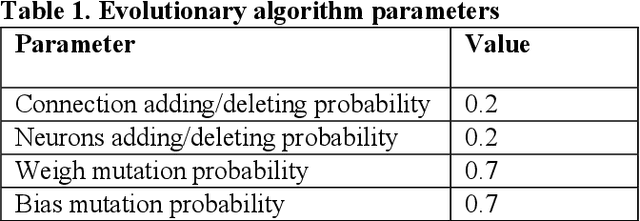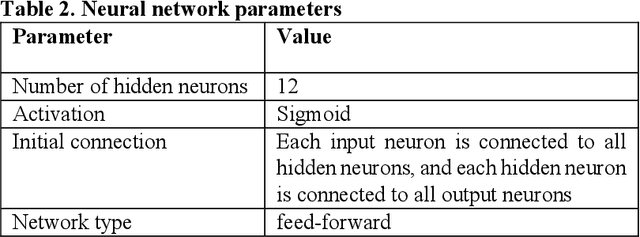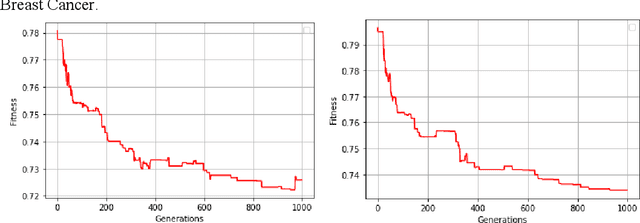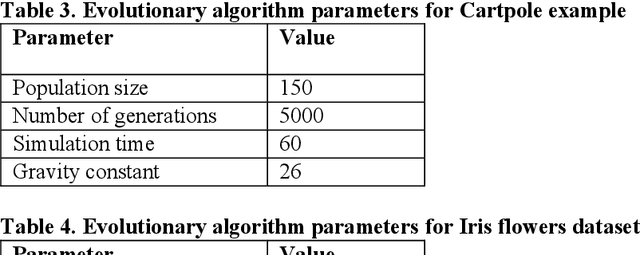Abdullah Khalili
Evolving Neural Networks with Optimal Balance between Information Flow and Connections Cost
Mar 14, 2022



Abstract:Evolving Neural Networks (NNs) has recently seen an increasing interest as an alternative path that might be more successful. It has many advantages compared to other approaches, such as learning the architecture of the NNs. However, the extremely large search space and the existence of many complex interacting parts still represent a major obstacle. Many criteria were recently investigated to help guide the algorithm and to cut down the large search space. Recently there has been growing research bringing insights from network science to improve the design of NNs. In this paper, we investigate evolving NNs architectures that have one of the most fundamental characteristics of real-world networks, namely the optimal balance between connections cost and information flow. The performance of different metrics that represent this balance is evaluated and the improvement in the accuracy of putting more selection pressure toward this balance is demonstrated on three datasets.
Toward Building Science Discovery Machines
Apr 05, 2021Abstract:The dream of building machines that can do science has inspired scientists for decades. Remarkable advances have been made recently; however, we are still far from achieving this goal. In this paper, we focus on the scientific discovery process where a high level of reasoning and remarkable problem-solving ability are required. We review different machine learning techniques used in scientific discovery with their limitations. We survey and discuss the main principles driving the scientific discovery process. These principles are used in different fields and by different scientists to solve problems and discover new knowledge. We provide many examples of the use of these principles in different fields such as physics, mathematics, and biology. We also review AI systems that attempt to implement some of these principles. We argue that building science discovery machines should be guided by these principles as an alternative to the dominant approach of current AI systems that focuses on narrow objectives. Building machines that fully incorporate these principles in an automated way might open the doors for many advancements.
 Add to Chrome
Add to Chrome Add to Firefox
Add to Firefox Add to Edge
Add to Edge